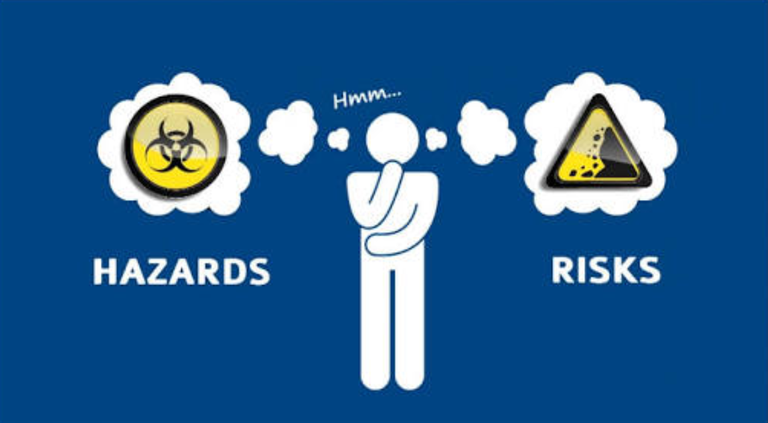
Although recognizing and managing occupational health risks can appear to be a complex task, the occupational health procedure helps break occupational hygiene into five manageable procedure.
OCCUPATIONAL HEALTH PROCEDURES
RISK ASSESSMENT(RA)
Risk assessment is used to quantify levels of health risks due to exposure to chemical, physical, biological psychological agents or factors. Based on the risk assessment, some potential risks may warrant further evaluation or control.
RA procedure assesses whether the workforce could be harmed by exposure to environmental agents at the working place, the most common and required Risk assessment is exposure based, which identifies potential health risks from exposures to workplace agents.
These are based on historical occupational hygiene exposure assessments and current monitoring results. Another risk assessment is the health based RA which is based on medical and disease studies of employees and is sometimes recommended but no required. The health studies are performed by trained medical or epidemiology professionals.
EXPOSURE ASSESSMENT
Exposure Assessment is the required exposure evaluation element of the risk assessment to determine if the exposures are within occupational exposure limits or other exposure risk criteria.
It includes selecting an exposure standard, developing a monitoring plan, performing , monitoring and preparing exposure profiles for employees.
Implementation of this procedure yields exposure information often called exposure profiles for significant exposures to workplace agents. The results are compared to the acceptable occupational exposure standard limit for the agent to determine if the exposures are acceptable.
Where the initial steps of the risk assessment indicate that a significant exposure could occur to an agent, the first step is to review past monitoring data or exposure estimates. When existing data do not describe the magnitude and extent of the exposures, additional monitoring is required.
Monitoring techniques depend on whether the hazard is a chemical or physical agent and if it is chemical, whether it is gas, vapor or particulate.
Monitoring techniques also depend on if there is a suitable direct reading instrument for the agent.
The assessment results can be acceptable, uncertain and unacceptable.
Acceptable: The exposure level or levels are low enough so that resulting exposures are well below the acceptable exposure levels.
Uncertain: A decision cannot be made due to limited data, results very close to the acceptable level or there is the potential for uncontrolled exposure that has not yet been evaluated.
Unacceptable: The level is high enough to present an unacceptable risk, which triggers an exposure prevention and control plan.
EXPOSURE PREVENTION AND CONTROL Exposure Prevention And Control identifies method to control hazards, primarily through engineering and management systems, with personal protective equipment used as a last resort. This procedure involves a written plan and dictates following a hierarchy of specific prevention and control methods. The prevention and control methods must follow this response hierarchy: • Hazard Elimination • Substitution • Engineering Controls • Administrative controls • Personal Protective Equipment
A written plan should show that controls achieve compliance with existing occupational exposure standards set by OSHA and applicable laws.
Adapt to the workplace and be based on good practice and current knowledge.
Include training on the use and maintenance of exposure control systems.
Global Medical Surveillance Standards
GMS standards establish a model to provide appropriate medical surveillance for potential work related exposures.
Medical surveillance is appropriate when the potential exposure to an environmental agent has a known health effect and there is a validated, reproducible and measurable biological marker of exposure.
Occupational Health Competency Requirements
Occupational health competency requirements is a support process to make sure that the personnel, service provider and consultants used to perform occupational hygiene functions are qualified. It includes occupational health professionals, employee assistance program and work life services advisors and occupational hygiene sample analysis laboratories.
These procedures are to implemented in a manner appropriate for the location that includes procedures for identification and control of workplace exposures including infectious disease and ongoing monitoring and surveillance of affected person.
These procedures should help organisations recognise and manage the health risks of its employees.
Posted from Air Clinic Healthcare App. Download Android!
Hello!
Thank you for posting through the AIR CLINIC HEALTHCARE APP! Upvoted!
You earned 25 AIRCOIN! Post daily to earn more...💛💛
Educative and helpful... Nice post
#bigwaves